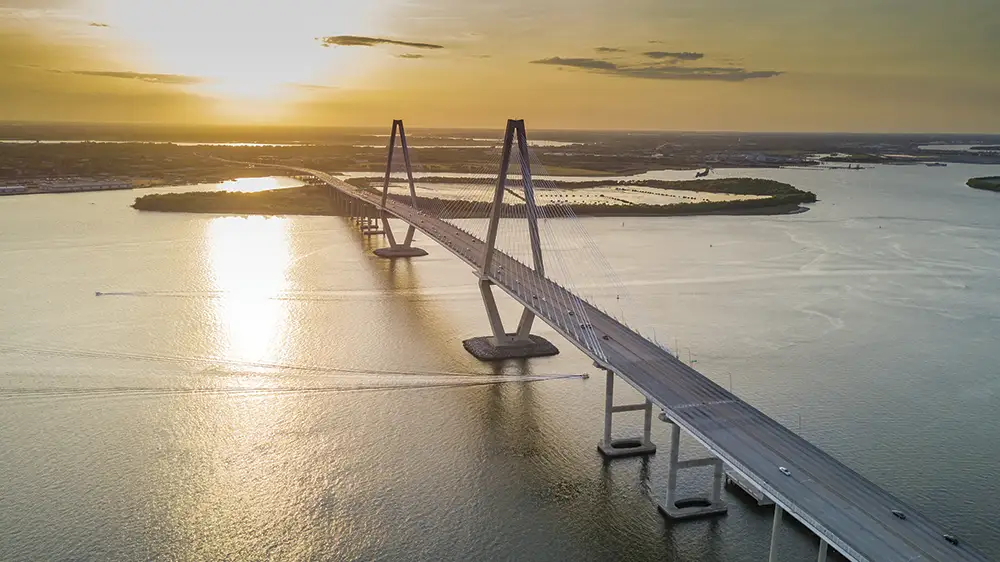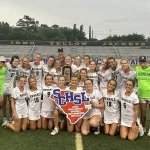
One of the most iconic images in Charleston, if not the entire Lowcountry, the Ravenel Bridge has been featured in movies, television shows, magazines, books, a record album cover, countless photographs and even a video game.
None of that should be surprising. The majestic structure complements the beauty of the rivers and saltwater marshes, affording a view unlike any other. It’s more than just a way to get from one side to the other; it’s a destination in itself.
The Ravenel Bridge, which turned 20 this year, replaced two aging bridges: the John P. Grace (or the “old Cooper River Bridge”), built in 1929, and the Silas M. Pearman (aka the “new bridge”), built in 1969. Both of those bridges were also icons – the Grace for providing a death-defying (some say thrilling) driving experience and the Pearman for offering a reversible lane whenever needed. But when driving on either, the goal was to get over them as quickly and safely as possible. The experience is forever etched into the memory of anyone who crossed the twin bridges – and still causes some to quake.
When the Ravenel Bridge was completed in 2005, the entire bridge, including the traffic lanes, was open to pedestrians for two days before automobiles were permitted to cross. That gave people a unique opportunity to enjoy the view without the distraction of vehicular traffic, and for many, to confront the fears that still lingered from crossing the two previous bridges. Now, with traffic whizzing by just feet away, pedestrians and bicyclists flock to the special lane on the bridge, made just for them, to enjoy a bird’s-eye view of the harbor. Even commuters can’t help but take a quick glimpse at the breathtaking panorama.
The older bridges shared the limelight in their day, but safety had become an issue on the antiquated and rusting duo. However, there was another consideration in erecting the Ravenel Bridge. With the shipping industry propelling much of the area’s economy and container ships becoming larger, a new bridge had become a necessity. Mega freighters needed to be able to pass underneath on their way to and from the port terminals, but that wasn’t possible with the lower height of the earlier structures. The roadbed of the Ravenel soars 186 feet above the river, providing vessels with safe clearance.
In the 1990s, a new Cooper River bridge was one of a handful of major infrastructure priorities across the state. As is often the case, funding presented a challenge. The State Infrastructure Bank was created to finance the statewide projects, but communities were required to pay a share of those being considered. Residents opposed both a toll and an increase in sales tax to provide the money. Ultimately, Arthur Ravenel Jr., the state senator representing Mount Pleasant at the time (and eventual namesake of the bridge) helped to forge local, state and federal partnerships and bridge the chasm that usually defines politics.
By Mary Coy




Leave a Reply